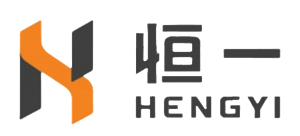
What Causes Slow Conveyor Belt Speeds?
2025-08-22 10:12Industrial nylon conveyor belts are critical equipment in automated production lines. Their speed and stability significantly impact overall efficiency. However, in actual use, slow conveyor belt speeds frequently occur, severely impacting production schedules and efficiency.
· Reasons for slow industrial nylon conveyor belt speeds:
1. Motor failure: The motor is the core component driving the conveyor belt. Motor failures, such as insufficient power or reduced speed, directly slow the conveyor belt. Furthermore, unstable power supply to the motor can affect motor performance, further reducing conveyor belt speed.
2. Drive system problems: The drive system includes components such as couplings, pulleys, and drive rollers. Looseness, wear, or an inappropriate transmission ratio in these components can reduce transmission efficiency and lead to a decrease in conveyor belt speed. Insufficient friction between the drive roller and the conveyor belt can significantly reduce conveyor speed.
3. Overload: Excessive material load on an industrial nylon conveyor belt increases equipment resistance, placing greater strain on the motor and reducing conveyor speed. At the same time, uneven material distribution may also cause excessive stress on the conveyor belt in certain areas, affecting speed stability.

· Industrial Nylon Conveyor Belt Speed Adjustment Methods
1. Inspect and Replace Faulty Components: For motor failure, first check the motor's operating status to observe any abnormal noise or heat generation. If any problems are found, repair or replace the motor promptly. Also, ensure a stable power supply to the motor to prevent voltage fluctuations from affecting motor performance. Drive system components, such as couplings and pulleys, should be regularly inspected for tightness and wear, and adjusted or replaced promptly.
2. Adjust the Drive Ratio and Tension: Select an appropriate drive ratio based on actual needs to increase conveying speed. This can be achieved by replacing the drive roller with a larger diameter or adjusting the transmission method between the motor and the drive roller. Appropriately increasing the conveyor belt tension can increase friction between the belt and the drive roller, thereby increasing conveying speed. However, be careful not to overtighten the belt, as this can damage the industrial nylon conveyor belt or increase motor load.
3. Optimize load distribution: Rationally arrange material conveying volume and speed to avoid overloading. In actual operation, the conveyor belt's inclination can be adjusted and debris removed based on the material's characteristics and conveying requirements to reduce resistance and increase conveying speed.
To address the issue of slow speed on an industrial nylon conveyor belt, a comprehensive inspection and analysis of the motor, drive system, and load are necessary to identify the specific cause and implement appropriate solutions. Regular inspection and maintenance of the equipment to ensure all components are in good condition can effectively improve the conveyor belt's operating speed and stability, thereby enhancing overall production efficiency.
